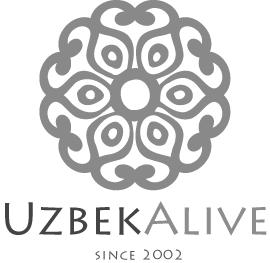Welcome to our ikat fabric online shop where we offer handmade silk and cotton ikat fabrics by meter from Uzbekistan! Here we offer a selection of handloom woven cotton and silk ikat fabrics, pure silk fabrics and a limited selection of ikat velvet fabrics.
There are all kinds of ikats out there. What we offer genuine handloom woven artisanal products. In rare cases we have vintage fabrics and they are stated as such in product description.
By adding 1 to your shopping cart you are adding 1 meter of fabric. For our American customers 1 meter = 1.09 yard.
What is ikat?
To answer this question we will refer to scholars to give a proper definition:
“The Malay-Indonesian word ikat derives from the verb mengikat, which means “to bind, tie or wind around”. Ikat is an ancient technique, a method of wrapping yarns to form areas of resist and then dyeing these sections of yarn before the weaving of a cloth begins. “
Splendid Ikats of Central Asia” | Kate Fitz Gibbon and Andrew Hale
These days the cradle of handloom weaving culture in Central Asia is a small city of Margilan, which is located in Fergana Valley of Uzbekistan. There, for centuries, different patterns and ikat weaving techniques have been developed and refined generation after generation, often within the same family.
What fabrics do we offer in our fabric shop?
At UzbekAlive we sell authentic handwoven materials from Uzbekistan. Most of our fabrics are cotton and silk blends with a few pure silks, ikat velvets and pure cotton fabrics. We also have a few examples of fabric from the Soviet era – those pieces we treat and specify as vintage in a product description.
Width of our Uzbek hand woven fabrics
Width of our handloom material is limited by the width of hand looms. Depending on a pattern the widths of most of our fabrics varies from 30cm to 50cm (that’s 11.8” to 19.7”). Often times this width is not enough and this is why we offer pattern matching service.
Uzbek Ikat pattern
Bold patterns and vibrant colors – these two characteristics differentiate Central Asian textiles from resist dyed fabrics made by other cultures. Historically, silk fabrics were only available to royalty who had to stand out from the masses with their rich colorful clothing. These days, these silk and cotton blend fabrics are still considered to be luxurious textiles used for making sophisticated clothing and interior decor.
Hand woven ikat versus print: what’s a difference?
The popularity of ikats gave rise to a more industrialized way of “mocking” ikat fabrics through printing. Ikat is as a method of tying and dying weft and warp yarn to create a desired pattern. Print is a printing technique, which is much simpler, less time consuming, less labor intensive and it costs significantly less. It is also not really an ikat! With printed fabrics one gets only an a pattern, which lacks a soul of handmade textiles.
Using Central Asian textiles
Central Asia fabrics have been trending on fashion runways for decades. John Galliano, Oscar de la Renta and many others made beautiful collections with Uzbek ikats. In addition to fashion, our ikat fabric online stop works with interior designers and decorators as well as DIY creatives. Over the years our fabrics have been used for ikat cushions, ikat curtains, furniture upholstery, wall paneling and other decoration projects.
Caring for fabrics
We include care instructions for each fabric in a product description. In general, we recommend dry cleaning our fabrics to retain shape, color and moiré pattern, when applicable.
For those fabrics which are washable, a proper way to care for them is to hand wash them in cold water with a shampoo – seriously, shampoo, because silk is like hair and it requires delicate treatment.
Sustainability of Central Asian textiles
In today’s world nothing is entirely sustainable and green, however, with Central Asian hand made fabrics there are a few big points that can be ticked off as “green”. For example,
1) Central Asian ikats are made by hand in limited quantities. There is no mass production, which could feed fast fashion industry, number 1 pollutant of Planet Earth.
2) Entire process of ikat making is based in Uzbekistan. There are no cargos transporting raw materials from country to country polluting the environment with CO2 emissions.
3) Textiles produced using resist dyeing technique is energy efficient. In fact, it is almost energy independent. Ikat dying and weaving processes are manual and do not require energy other than good lighting and heating in winter times.
On a negative side large scale cotton production consumes water and requires soil fertilization which negatively effects our environment. In 20th century artisans partially moved to chemical dyes to achieve more vibrant ikat colors. These chemical dyes pollute the water and soil.
In our fabrics collection we also offer products, which were dyed with natural dyes.


